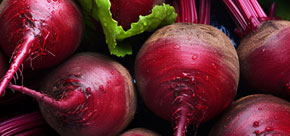Fresh Produce Standards
STORAGE Version 5.1
Click to view
Key – Those standards which have greater significance (all other standards are normal)
Recommendation – Those which do not affect certification
New – A completely new standard which the member must now adhere to
Revised – A standard that has changed and requires the member to take some different or additional action to before
Upgraded – The standard has been upgraded to a Key standard or from a Recommendation to a full standard
Appendix – Referenced in ‘How you will be measured’. Indicates that additional information is provided in the Appendices, which are available at the end of each section.
Cropping Categories Fresh Produce
Category 0 - Those you can eat raw and have a significant risk or history of pathogen contamination
Category 1 - Those you can eat raw and which do not have a protective skin that is removed before eating; they may also have a significant risk or history of pathogen contamination.
Category 2 - Those you can eat raw and which either have protective skin or grow clear of the ground, or that have no history of pathogen contamination.
Category 3 - Those that the customer always cooks.
An up-to-date list of the crop categories can be found on the Red Tractor website.
PR.ST.1
Storage areas must be managed and maintained in a safe hygienic condition to ensure crops stored do not become contaminated - e.g. glass, hard plastic, etc.
How you will be measured
PR.ST.1.a
PR.ST.1.b
PR.ST.1.c
- Glass and Hard Plastic Policy/procedure
– Glass and hard plastic register
– Glass and hard plastic check records
PR.ST.2
Temperature and humidity of storage facilities used to store packed product must be monitored and documented to ensure correct storage conditions are maintained.
How you will be measured
PR.ST.2.a
PR.ST.2.b
PR.ST.2.c
PR.ST.2.d
- Storage and product checks
– Out of temperature procedures
– Calibration records
PR.ST.3
Stored packed product must be rotated to ensure product quality and safety.
How you will be measured
PR.ST.3.a
PR.ST.4
Product stores must be cleaned each season, inspected and maintained.
How you will be measured
PR.ST.4.a
Store maintenance records
PR.ST.5
Where PPPs are used as store treatments, all use must be based on qualified recommendation.
Name and BASIS professional register number
PR.ST.6
Where PPPs are used as store treatments, operators must be able to demonstrate competence.
How you will be measured
PR.ST.6.a
PR.ST.6.b
- NPTC/Lantra certificates
– Product specific training from manufacturer
PR.ST.7
Systems must be in place to ensure that post-harvest treatments do not contaminate other products/crops.
How you will be measured
PR.ST.7.a
PR.ST.7.b
PR.ST.7.1
It is recommended that contractors used for post-harvest treatment of potatoes are certified to the National Association of Agricultural Contractor's ALBC Post-Harvest Potato Storage Treatment Standard
ALBC Post-Harvest Potato Storage Treatment Standard certificate
PR.ST.8
Where third party storage facilities are being used to hold harvested or packed product a contract or formal agreement must be in place defining storage requirements.
How you will be measured
PR.ST.8.a
Contract/agreement
PR.ST.9
Regular checks of storage providers to ensure they are meeting requirements (or a suitable alternative form of assurance) must be in place.
How you will be measured
PR.ST.9.a
Store audits or BRCGS certificate
AHDB advice on potato store cleaning and managing CIPC residues: https://ahdb.org.uk/knowledge-library/store-cleaning
More Standards
Download Fresh Produce Standards Manual
Download Fresh Produce Standards Manual – Including GLOBALG.A.P Module
Download the changes to the Fresh Produce Standards from 1 February 2025
Download watercress protocol
Download hops protocol
Useful Documents
UK Crops grown and risk categories
Fresh Produce assessment structure
This section is relevant where product is being stored in facilities under the direct management of the business (owned or rented). Where third-party storage is used, standards ST.8 and ST.9 are applicable.
ST.1 – Monthly glass and plastic checks are suggested as a guide, but an alternative frequency may be deemed appropriate, for example; where the store is unoccupied for extended periods or for Controlled Atmosphere (CA) stores where it may not be possible to safely enter the store.
ST.5 – A PPP is defined as any product with a current MAPP number. Scope may encompass multiple applications if deemed appropriate by the qualified adviser.
ST.6 – Where store treatments do not fall within the scope of NPTC and Lantra certified modules, members shall seek alternative training options where provisions exist. Examples include online training provided by product manufacturers supplying ethylene based treatments (e.g. Restrain: https://restrain.thinkific.com)
